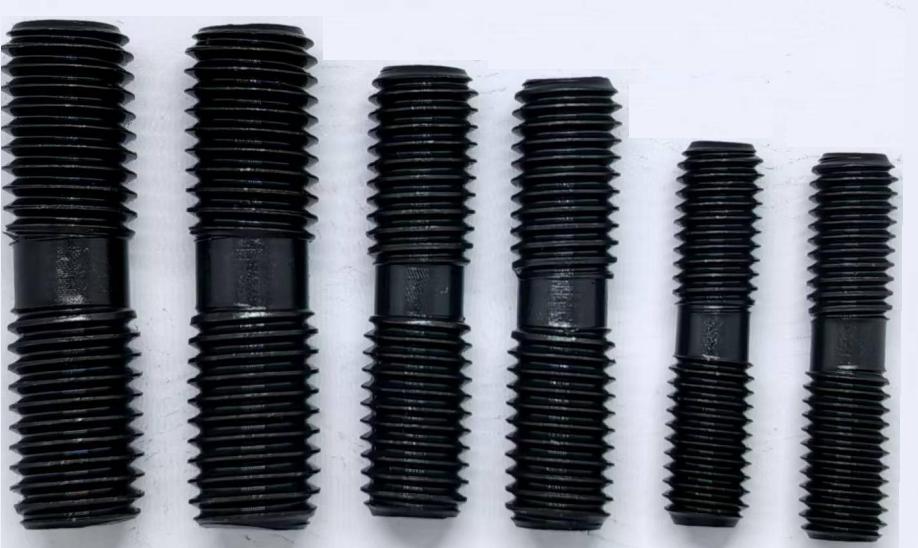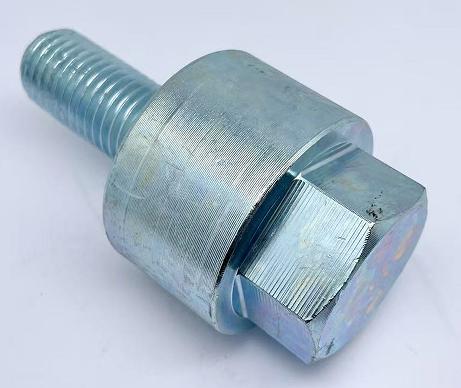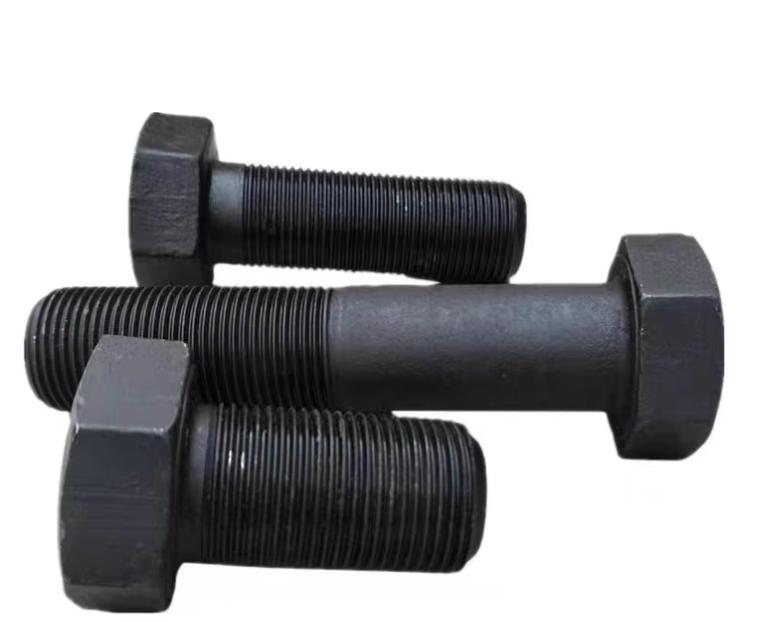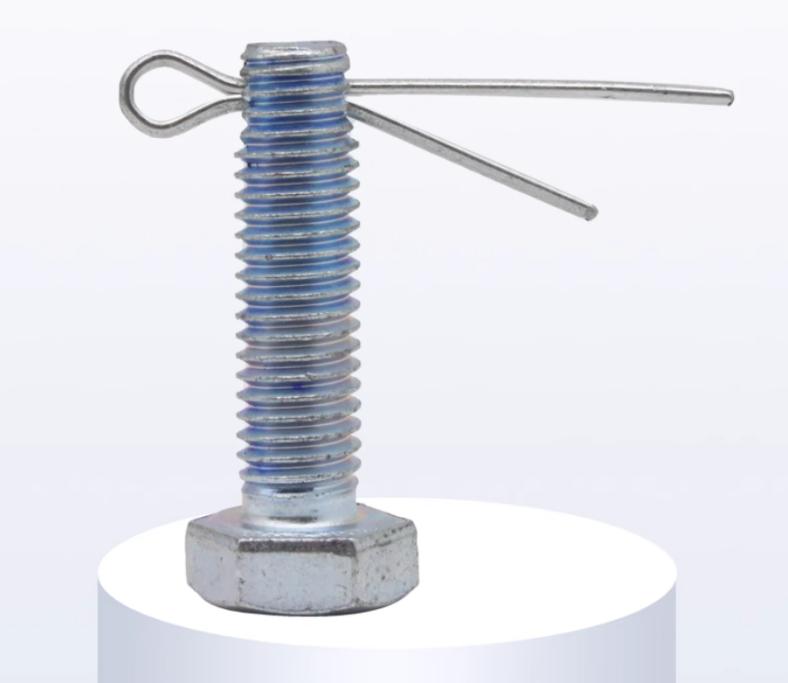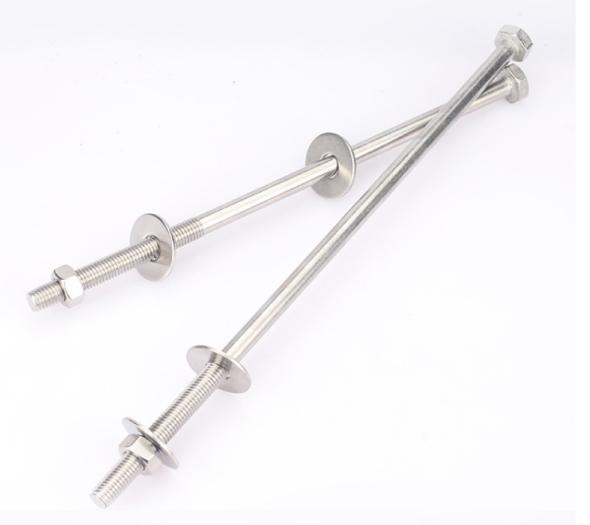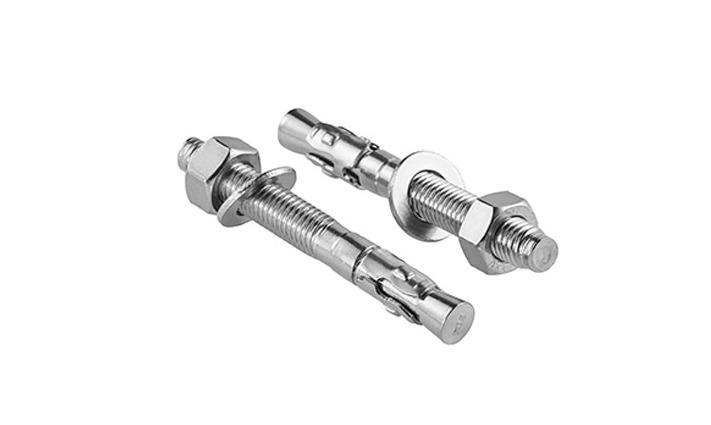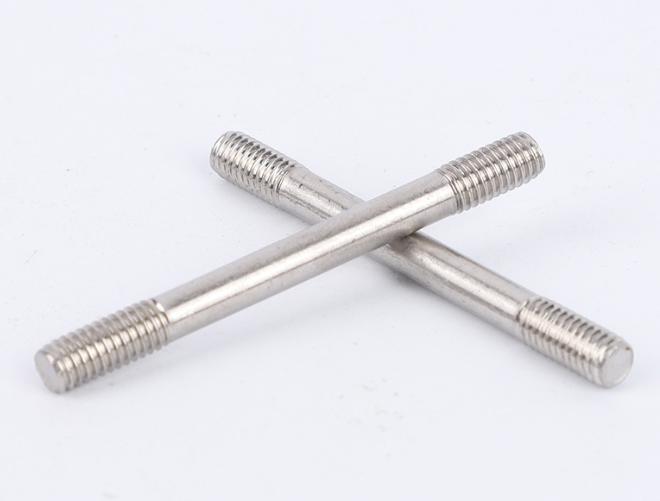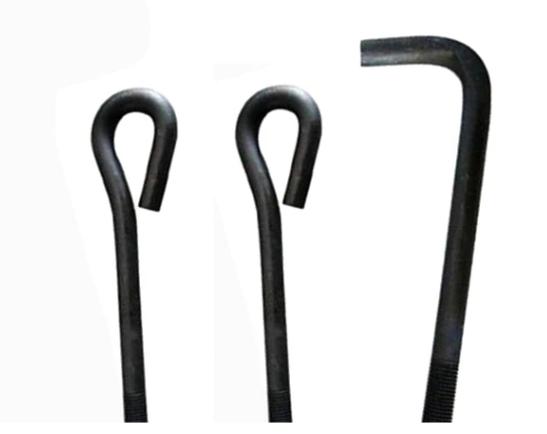Anchor Bolts vs. Expansion Bolts: Choosing the Right Type for Your Project
In the field of construction and structural engineering, the integrity and stability of a structure often depend heavily on the kind of fasteners used to secure it. Two types that are commonly used include anchor bolts and expansion bolts. Although both are capable for anchoring objects to masonry or concrete, however, their design, application and performance characteristics differ dramatically. Understanding the differences between anchor bolts and expansion bolts is essential to select the appropriate hardware for a specific project.
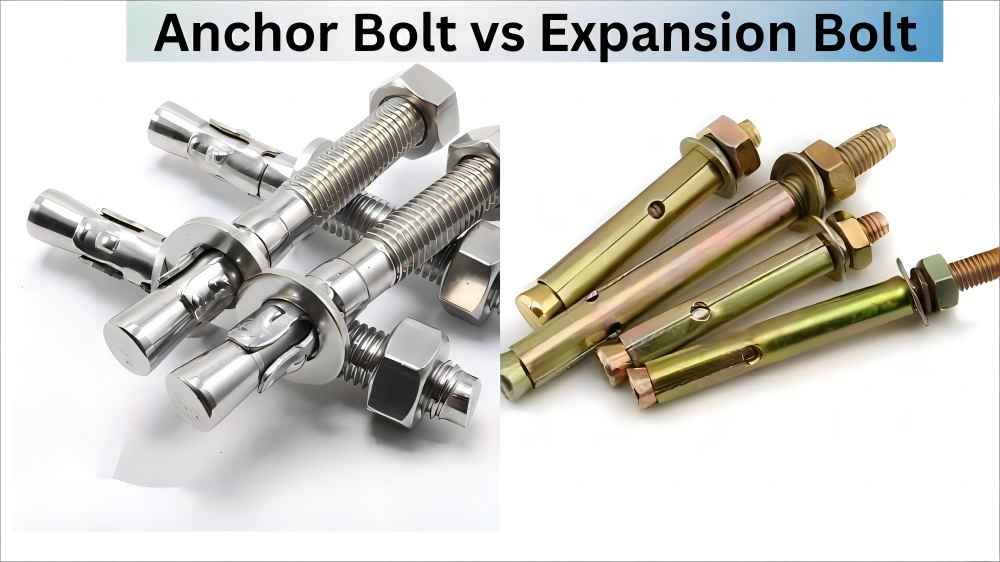
Table of Contents
What are Anchor Bolts
Anchor bolts are special hardware specifically designed for a certain goal: to provide a solid and reliable connection between the object and an extremely strong base. The base materials used are usually brick, concrete or masonry. They are the solid backbones for numerous construction projects.
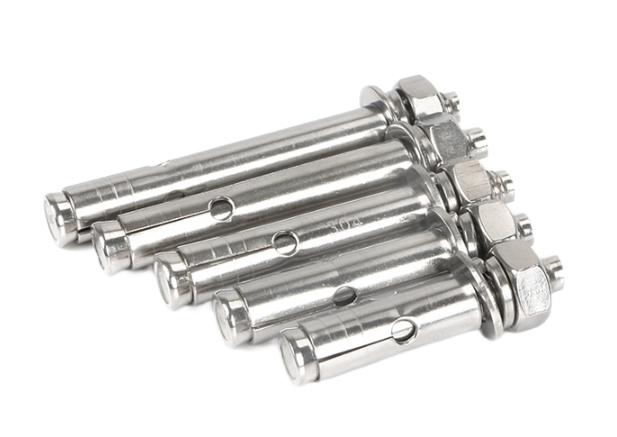
As opposed to the ordinary bolts for metal or wood, anchor bolts are superior at grasping these heavy materials. They are secure and indispensable for a variety of applications in the construction and renovation. From anchoring heavy equipment in industrial settings to putting up cabinets in bathrooms and kitchens anchor bolts play an crucial part in ensuring stability and security.
There are a variety of anchor bolts to choose from, all with their own style and method of installation.
| Type of Anchor Bolt | Description | Typical Applications | Installation Method |
| L-Shaped Anchor Bolt | The bent is 90 degrees at one side to ensure an anchorage for concrete | Light poles, columns, base plates | Cast-in-place (before concrete sets) |
| Headed Anchor Bolt | This item has a forged hexagon or square head, which resists pulling out. | Bridge railings, structural columns | Cast-in-place |
| Sleeve Anchor Bolt | The sleeve has an expansion which grips both sides of the hole, when tightened. | Medium-load fixtures, handrails, HVAC systems | Post-installed into concrete cures |
| Wedge Anchor Bolt | Make use of a wedge mechanism increase the size and grip on the concrete | Heavy equipment, beams, structural supports | Post-installed |
| U-Shaped Anchor Bolt | The shape is similar to letters “U”; both legs are embedded in concrete | Pipe supports, heavy machinery bases | Cast-in-place |
| Double-End Rod with Plate | Threaded rod that is surrounded by an oval plate welded at the other end | Industrial foundations and large equipment bases | Cast-in-place |
| Drop-In Anchor Bolt | An anchor set that is internally threaded by hammering the plug to extend it | Ceilings suspended from ceilings Lighting, plumbing, suspended ceilings | Post-installed |
| Hook Anchor Bolt (J-Bolt) | Bent in the shape of a J for concrete anchoring that is secure | Poles and columns, as well as bases for equipment | Cast-in-place |
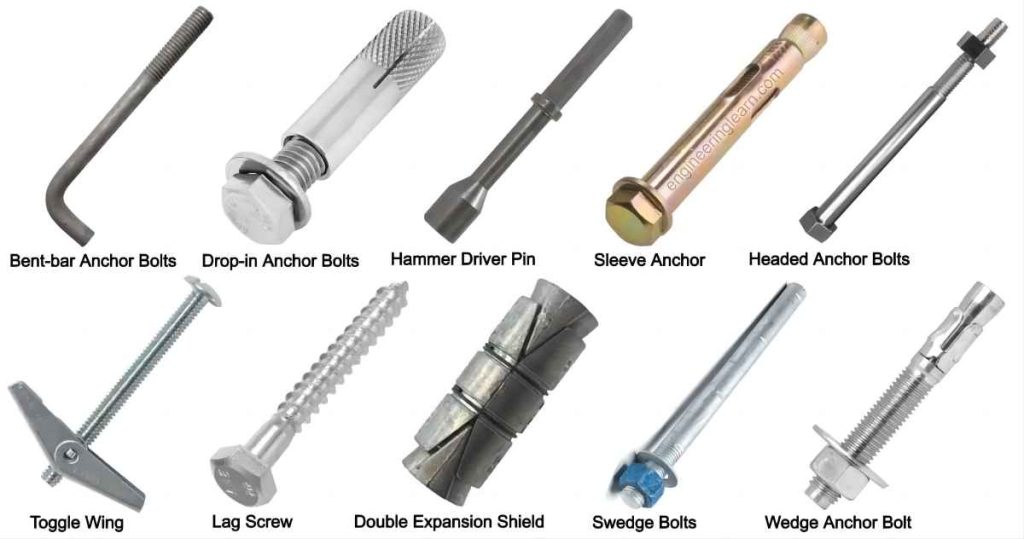
What are Expansion Bolts
Expanding bolts are a distinct type of anchor bolt relying on the mechanical wedging mechanism to secure a grip in a hole that has been pre-drilled. Contrary to chemical anchors, which employ resin adhesives to bond with the material of base the expansion bolts secure their position by causing friction. While there are a few variations in their design, the core principle remains consistent:
- Pre-drilled Hole: The initial procedure involves drilling a precisely-sized hole into the base material (concrete brick, brick, or masonry). The diameter of the hole should be in line with the dimensions of the selected expansion bolt.
- Expansion Bolt Insertion: The expansion bolt is put into the hole. It usually consists of a sleeve, or anchor body with an anchor bolt or screw that is that is threaded through it.
- Tightening the Bolt: The screw or bolt gets tightened up, a wedge component of the expansion bolt enters the picture. The wedge could be a distinct piece or an internal part of the sleeve. The force created by tightening the sleeve creates a driving force that presses the wedge further into the sleeves.
- Frictional Grip: The primary function of the wedge to expand the sleeves. When the wedge expands it applies pressure to the inside wall of the hole that was drilled. The pressure causes a pressure that creates friction between the expansion bolt and surrounding brick, concrete, or brick. The frictional grip keeps the object in place.
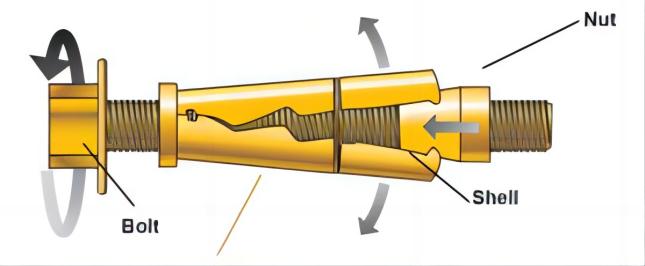
There are several common types of expansion bolts, each with a slight variation on this core principle:
| Type of Expansion Bolt | Description | Typical Applications | Installation Method |
| Wedge Anchor | The clip is split and expands when the bolt is tightened. | Columns, heavy-duty structural connections | Posts are installed in concrete solid |
| Sleeve Anchor | It has a sleeve that expands across an entire length when it is tightened. | Medium-duty loads, handrails, signs | Concrete or brick |
| Drop-In Anchor | Externally threaded, expands as an anchor plug is inserted into the anchor | Supports for hanging pipe and suspended ceilings | Set using a tool for setting |
| Lag Shield Anchor | Expanding shields for the lag screws that are made of softer base materials | Light – to medium-duty fixtures made of blocks or brick | Drilled and then inserted into the base |
| Strike Anchor | Anchor for the expansion wedge is made by hitting the pin against the body | Rapid, repetitive anchoring tasks | Concrete is hammered and driven |
| Hammer Drive Anchor | Anchor pre-assembled and driven by hammer that expands as the pin is pulled into | Lightweight fixtures, electrical boxes | Drive into the hole you have pre-drilled |
| Concrete Screw Anchor | Threaded fastener which cuts concrete when it is being installed | Anchoring of medium-duty and temporary installations | Directly screwed into concrete |
| Split Drive Anchor | Solid anchor that has a divided shank which expands on the hammering | Anchoring of light-duty strength in concrete | Hammered into hole |
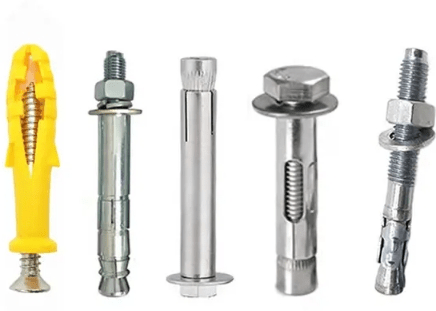
Key Differences Between Anchor Bolts and Expansion Bolts
While all expansion bolts are anchor bolts, not all anchor bolts are expansion bolts. Here’s a table summarizing the key differences:
| Feature | Anchor Bolts | Expansion Bolts |
| Installation Timing | It is installed prior to or during the pouring of concrete (cast-in-place) | The concrete is installed after it has dried (post-installed) |
| Load Capacity | More load-bearing capacity, ideal for structural loads with a lot of weight. | High capacity to moderate capacity, depending on the type of base material |
| Primary Use | The anchoring of structural structures (e.g. columns foundations, machinery, columns) | Retrofitting, fixtures, equipment installation in existing structures |
| Grip Mechanism | The concrete bond is mechanically locked (embedded) | Expansion creates frictional grip within the drilled hole |
| Installation Complexity | It requires planning and precise placement prior to the concrete setting | Installation is easier with standard tools that are already in concrete |
| Adjustment After Installation | It is not re-usable after concrete has been cure | A minor adjustment is possible prior to the final tightening |
| Reusability | Typically, they are not recyclable. | Certain types of fungi can be removed and used in another way |
| Best Used In | New construction projects require permanent structural anchoring | Retrofit and post-construction applications using cure concrete or masonry |
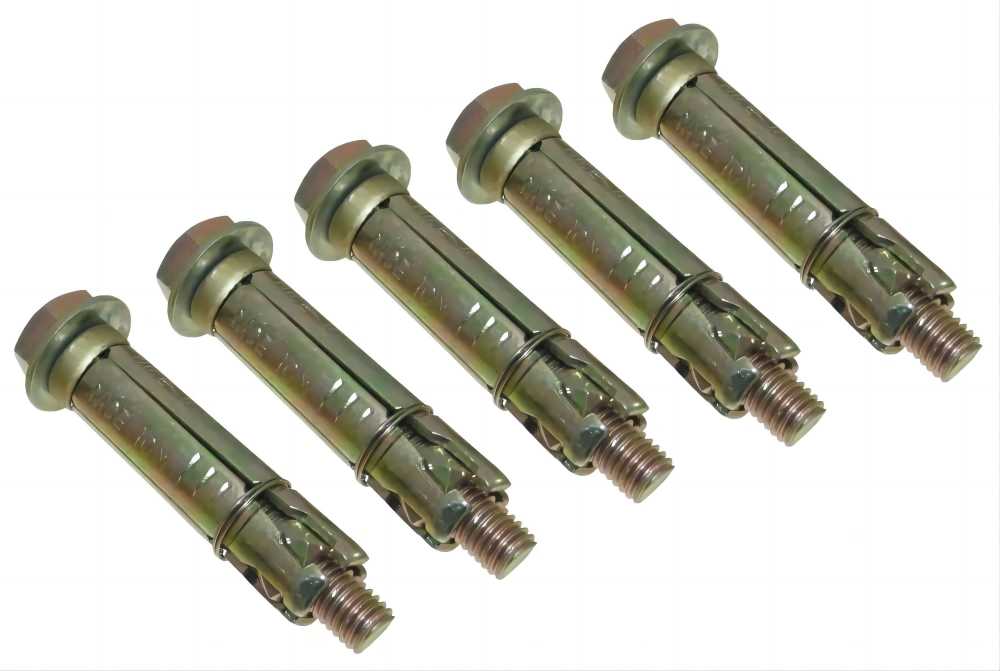
Key Factors to Consider for Choosing Between Anchor Bolts and Expansion Bolts
When deciding between anchor bolts and expansion bolts, knowing the particular requirements of your project is vital. Each type of bolt is unique and has characteristics that make it appropriate for different environmental, structural and functional conditions.
1. Installation Conditions
One of the most important things to consider is the construction stage. Anchor bolts are generally placed in concrete that is wet during casting, meaning they have to be precisely placed prior to the concrete setting. This makes them suitable for construction projects that are new and where the foundation for structural structures is being constructed. However they are designed for post-installation applications which makes them more adaptable and suitable for concrete or masonry surfaces in which retrofitting or upgrading is necessary.
2. Load and Structural Requirements
The load-bearing capacity plays an important factor in the choice of. Anchor bolts are specifically designed to handle high loads, and are typically used to secure large steel structural structures, machinery or in building frames. Expanding bolts, though they are available in heavy-duty models, such as wedge anchors are often used in medium-load situations for example, like fixing Handrails and HVAC brackets or other light equipment. If the task requires strong shear and tensile forces anchor bolts would be the best option.
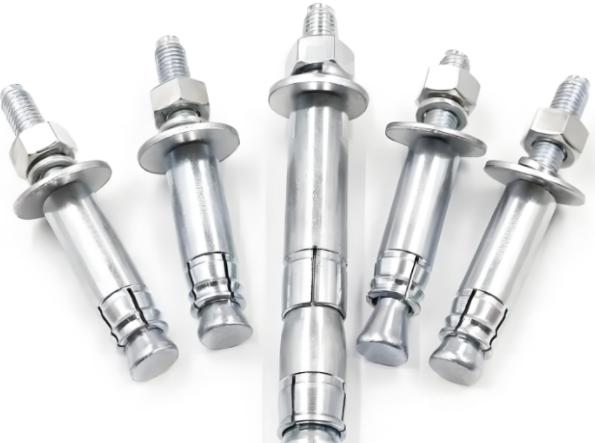
3. Base Material and Condition
The condition and the type of base material, whether cracked solid, hollow or solid concrete, can affect the performance of bolts. Anchor bolts, when cast-in place are firmly bonded within monolithic concrete, providing incredible durability. Expanding bolts depend on interaction between the bolt and surrounding wall, making them susceptible to cracks or spaces within the concrete substrate. When the material is degraded or brittle they can break when subjected to vibration or dynamic forces.
4. Ease of Installation and Flexibility
Flexibility in installation is another important element. Anchor bolts require careful planning, precise positioning and expert installation in the concrete pouring process. Any alignment issue is difficult to correct when the concrete is set. Expansion bolts provide the benefit of adjusting throughout the installation process, which allows for more precise alignment and placement with standard tools. They are particularly appealing for situations with little lead time as well as frequent changes.
5. Project Type and Lifecycle Considerations
For permanent installation for large-scale industrial or construction environments, anchor bolts offer the highest level of reliability and endurance. But, in the event that the anchoring solution is required to be altered or removed in the near future, expansion bolts provide greater flexibility. For temporary structures or evolving projects, the capacity to remove and replace expansion bolts could reduce downtime and also cost.
Summary
- Anchor bolts should be used when you require strong, long-lasting anchoring especially for structural components that are subject to heavy loads.
- Expansion bolts are used for dealing with post-construction installations, moderate loads, or when the flexibility of installation and removal is important.
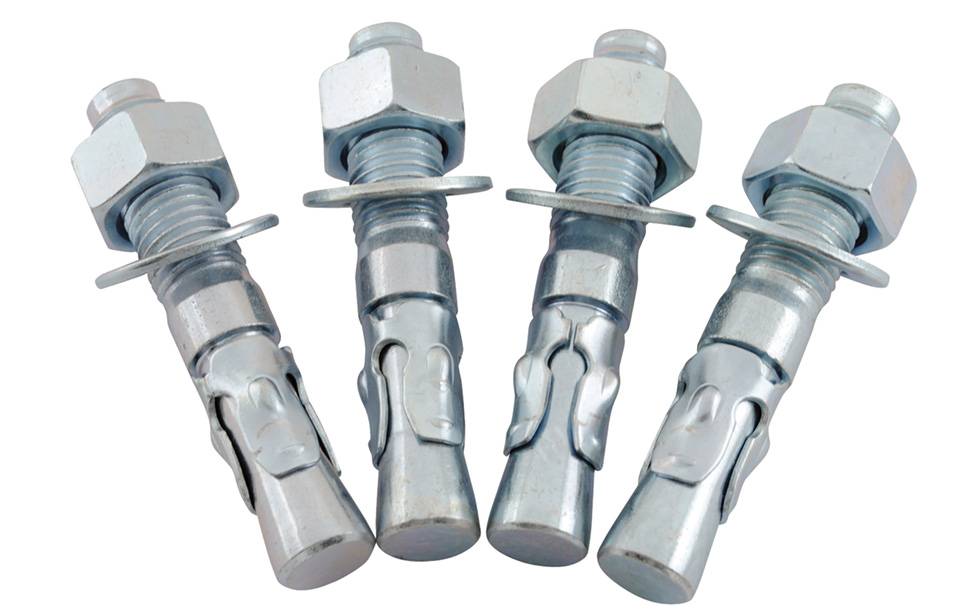
Final Thoughts
Anchor bolts and expansion bolts are essential for securing materials to concrete, choosing the right one requires a clear understanding of your project’s structural demands and installation conditions. For permanent, heavy-duty anchoring, anchor bolts are the preferred choice. For ease of use and retrofit adaptability, expansion bolts offer a practical solution. Knowing their differences helps ensure both safety and efficiency in construction and industrial applications.

